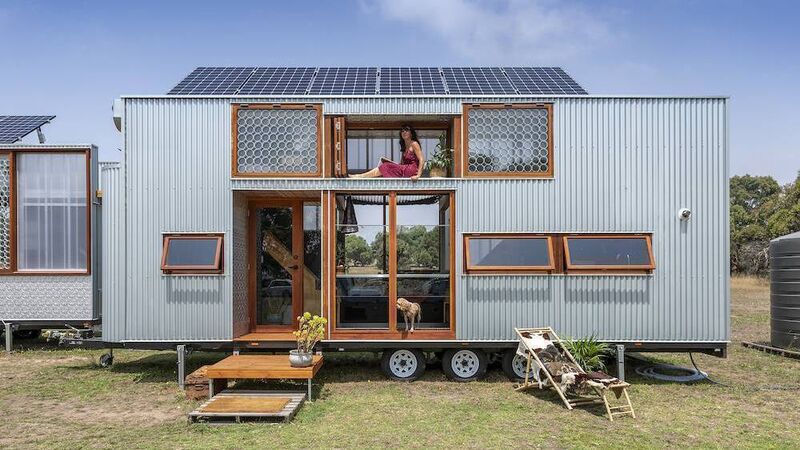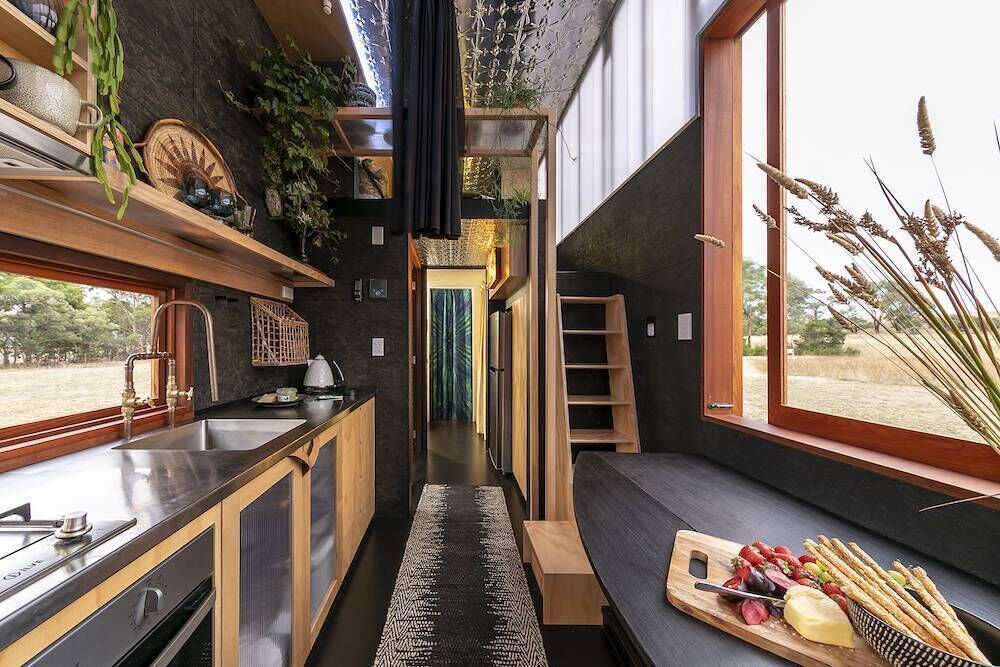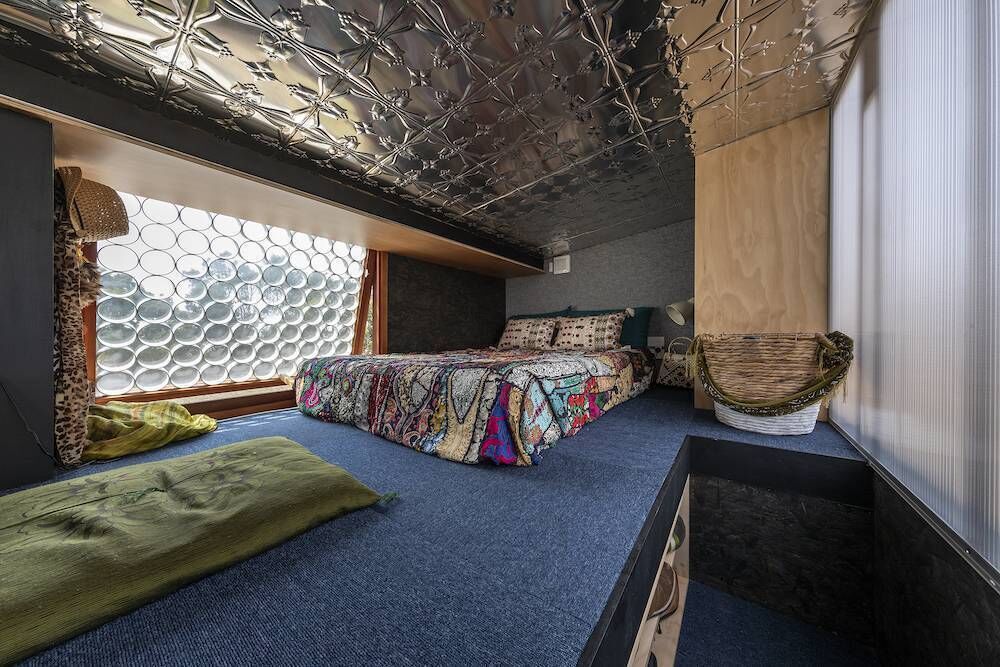Tiny homes 'not the complete cure' for Cork housing crisis but could be 'fast, cost-effective solution'

Constructing a tiny home is cheap and fast, and it has been suggested that they could offer low-cost, eco-friendly alternatives within the housing market.

Mr Homer said he firmly believes that tiny homes can be part of the solution.
Constructing a tiny home is cheap and fast, and it has been suggested that they could offer low-cost, eco-friendly alternatives within the housing market.
People of all walks of life in Australia and New Zealand, as well as some parts of the US, are turning to tiny homes for a solution against a backdrop of rising house prices, crippling rent, and a major accommodation shortage.
They are seen as a solution for young people looking for a place of their own, retirees seeking a cost-effective home to enjoy their golden years, homeless organisations seeking fast and effective solutions to homelessness, and everyone in between.
Tiny home villages have been popping up in some parts of Australia and New Zealand, allowing people to purchase or rent a plot of land and install their tiny home. Some are building tiny homes on their land or their family’s land, either to live in or rent out.
The Queensland and Western Australia state governments purchased tiny houses on wheels and had them installed on local government land, where they are currently being used as social housing for low-income families.
Some local authorities are embracing them as a partial solution to the worsening housing crisis in Australia, while some are not so keen.
In Shellharbour, Mr Homer is proposing a two-year pilot programme that would allow mobile tiny homes, installed by homeowners on their own land without the need for planning permission, to be used as rental accommodation for short, medium and long term.
“It will add a very healthy layer of benefit to this really deep housing crisis.
“It’s not just my fellow Australians and Shellharbourites that are finding it hard - we’ve got key workers coming into communities and we need housing for them too,” he added.
“Shellharbour is building a $720m hospital and we’re going to need key workers to build it and staff it.”
Recent data from Down Under shows it takes around five and a half years for an average Australian to save 20% of their income for a 20% deposit on a median-priced home.
Mr Homer, who is also a mortgage broker, said it is a “huge ask” for people to save for a deposit these days.
“The whole crisis is deepening and worsening.
“It’s incumbent on me, in my role as mayor, to do everything I possibly can to provide, at my level of Government, solutions that I feel are quick, tangible and cost-effective.
“The median price of a house in Shellharbour right now is around $900,000,” the Mayor added.
“Some highly-specced tiny homes are around $170,000. Some cost less as well.”
Mr Homer added that removing the red tape of planning permission, the time and cost it takes to gain such permission, will be beneficial.
When asked if he would encourage the Irish Government and local authorities in Cork and across the country to explore tiny homes as a salve to our own housing crisis, Mayor Homer said: “I absolutely would, I’d go there personally to talk through it.
“We’re all being forced to do more with less at the local government level.
“Developing greenfield sites in cities, and I’m sure it’s the same in Cork, is very expensive,” he added.
“However, tapping into existing sites and infill locations allows for the use of existing infrastructure and services.
“Tiny homes on existing sites allow you to tap into the existing infrastructure.
“There’s huge benefits in terms of speed, cost, and access to land.
“That also helps the economy. It’s a good investment for landowners, and the extra income will go into the local economy, so it becomes circular.
“It also takes pressure off other areas of the housing crisis that people are striving for as well.
“Many people do want to live in a conventional home and that’s fair, but we do need quick, cost-effective solutions right now.”
The Australian Tiny House Association (ATHA), a non-profit association founded in 2018 with the aim of advocating for legalisation of tiny houses all over Australia, is seeking to turn the doubters into believers.
The ATHA represents more than 1,000 people and in excess of 20,000 have signed an ATHA petition calling on the Government and local authorities to support tiny houses on wheels as an affordable and sustainable housing option in Australia.
Speaking to , ATHA secretary Lauren Russell said: “Tiny homes have seen rising popularity in recent years, and we believe this is due to the lack of available housing to rent and buy in Australia.”
She explained that tiny house buyers usually fall into one of three categories - those looking for affordable housing options; those looking to reduce their environmental footprint and live more simply; and those looking for some additional income through the installation of a tiny house on their property to be rented out for short-term accommodation.
“This opens home ownership up to the wider population, including young singles, older singles, couples and even families,” Ms Russell added.
“The predominant issue is that tiny houses do not fit perfectly into an existing housing category.
“Some councils consider them to be caravans and therefore not subject to the Building Code of Australia, but instead subject to caravan construction regulations and vehicle standards.
“These are not suitable in many cases however, as tiny houses are often built with traditional construction materials and built for permanent living, not for regular transport.

“Some councils try to apply the Building Code of Australia, but due to their size, there are a number of clauses that are not possible to meet.”
The ATHA is supporting the tiny house industry by seeking recognition and acceptance of tiny houses on wheels and skids as a realistic, affordable and environmentally responsible form of permanent housing, and as a new housing typology in local laws, planning schemes and building legislation across Australia.
Ms Russell revealed how tiny homes have changed the lives of ATHA members and many more.
“Tiny homes have provided a low-cost alternative to traditional housing where residents can live safely with simplicity and dignity,” she explained.
“As the legalities of living tiny are still a barrier, we do not have a full picture of how many people are living tiny and how their lives have been changed.
“Anecdotally, we understand that there are many in tiny houses that do not know where they would be without their tiny homes.
Ms Russell said she is hopeful State Governments and local councils in Australia will recognise the positive impact tiny homes can have, and support their development in future.
“We do have a number of local councils leading the way with laws and policies that support the use of tiny houses as permanent housing options, including Esperance in Western Australia,” she explained.
“Others such as the Surf Coast in Victoria and Shellharbour in NSW are running trials to determine if tiny houses could work well in their regions.

“We still have a number of councils who do not acknowledge the potential of tiny houses and consider them simply to be caravans which are only suitable for temporary accommodation.”
Now the question is, would tiny homes work in Cork and would they be welcome?
Cork-based activists and urban designers, Dr Frank O’Connor and Jude Sherry, run Derelict Cork, highlighting vacancy and dereliction across Cork, and Anois, a design consultancy firm concerned with social justice and sustainability.
Speaking to , Dr O’Connor said that while the focus should be on developing apartments in and around Cork city, tiny homes could play a short term role in tackling the housing crisis.
“Mid-rise apartments and bringing vacant and derelict properties back into use should be the priority in Ireland, along with creating the public luxury [described as shared spaces for all] required to make urban living and apartments desirable and feasible for everyone.
“There is room for smaller homes, however some of those being developed in Australia are clearly too small for long-term living.
“However, they could work for short-term rental and/or holiday accommodation, which could then free up other properties for homes,” he added.
“Public luxury is key to any of this working, something we severely lack in Cork city and across Irish towns and cities.”







 App?
App?


